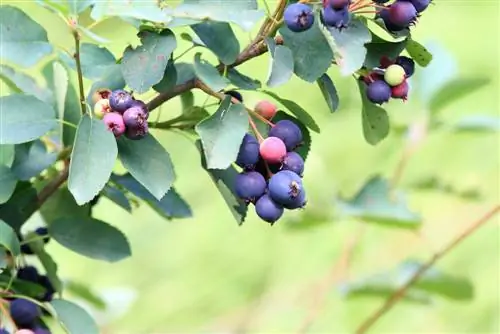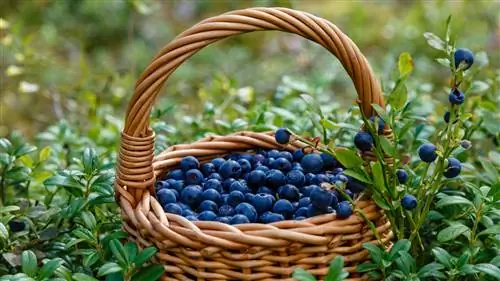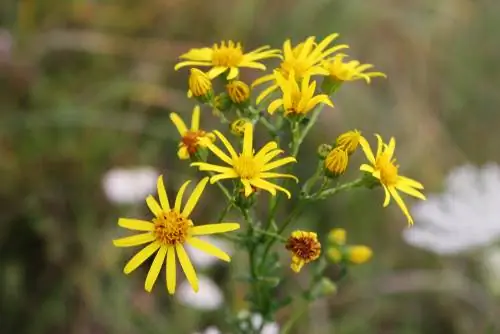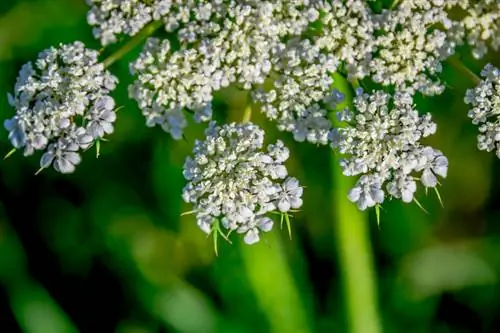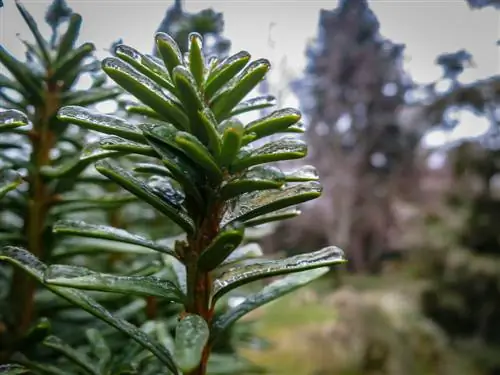- Author admin [email protected].
- Public 2023-12-16 16:46.
- Last modified 2025-06-01 06:02.
More and more people are discovering black berries for themselves. No wonder, because Aronia is edible and he althy at the same time. But the still little-known shrub also raises uncertainty. Are these really aronia berries or inedible specimens of another plant?
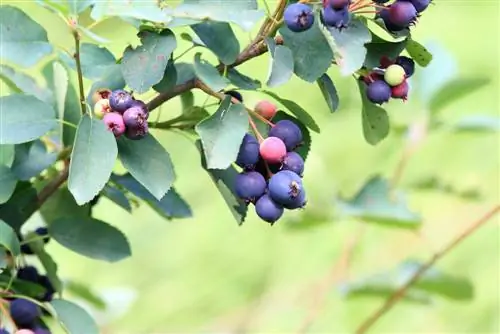
Is there a risk of aronia being confused with other plants?
Aronia is likely to be confused with the rock pear. Both plants differ in the amount of fruit on the umbels, sepal remains and ripening time. Serviceberry pears ripen in June, aronia berries in August. However, both fruits are edible and tasty.
Is there a risk of aronia being confused with other plants?
The origin of Aronia is in eastern North America. Here it is rarely found when collecting in the wild, which is why the risk of confusion does not play a major role. That may change at some point, as cultivation has been steadily increasing since the beginning of this millennium. The black aronia has the greatest fruit similaritywith the serviceberryThe red berries of the felty chokeberry with the red honeysuckle. But it only serves as a pasture for bees anyway because its fruits don't taste good.
How can I tell black chokeberry from serviceberry?
Less fruit hangs on the fruit umbels of the serviceberry than on aronia. These still have curved remains of sepals at the tips, while Aroniea fruits are smoother orhave a calyx cavity. What is helpful is theirdifferent harvest time Serviceberry pears ripen much earlier, as early as mid-June. Just 2-3 weeks later there are hardly any fruits hanging on the stem as they are very popular with birds. It takes a whole month until ripe fruits appear on the aronia bush in mid-August. Incidentally, a mix-up wouldn't be tragic at all, because the fruits of the serviceberry are edible and very tasty.
What characteristics can I use to recognize an Aronia?
Aronia grows like a bush and, depending on the variety, reaches heights of between 1.5 and a maximum of 4 m. The plant, also known as the chokeberry, is summer green. Other features:
- Leaf: 2-8 cm long, egg-shaped, finely serrated, pointed at the end, appears in April
- Bark: grey-brown, smooth
- Flower: Umbrella panicle with many individual flowers, white to pale pink, five petals, approx. 1 cm diameter, blooms in mid-May
- Fruits: initially green, then black, pea-sized, ripe from mid-August, intense red flesh, core
- Taste: tart sweet-sour, astringent
Tip
Reliable differentiation - pay attention to the taste of the ripe fruit
Ripe aronia berries are still very sour and tart that your whole mouth contracts when you take the first bite. Most people therefore don't like them raw at all. Things look different with the rock pear. Their fruits are juicy and sweet.

